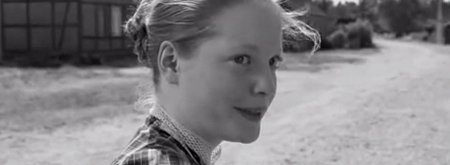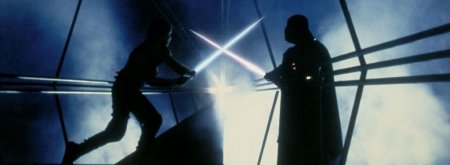The White Ribbon
‘I don’t know if the story I want to tell you is entirely true,’ confesses the narrator at the opening of Michael Haneke’s The White Ribbon. ‘But I feel I must talk about the strange events that occurred in our village. They could perhaps clarify certain things that happened in this country.’ In these ominous sentences, we are given two crucial lenses through which to view the events that follow.
Firstly, the narrative may not be reliable, and that which appears to be a clue might well be nothing but coincidence. And secondly, this tale of ordinary German lives before the outbreak of the First World War could have a sinister historical significance.
The Roots of Evil
In a small, unnamed rural village, the peace is shattered when the local doctor is injured in an inexplicable accident. Somebody has deliberately tied a tripwire to a tree near his house, right along the path where he always rides his horse. The question of whom the culprit might be becomes increasingly pertinent when, as time passes, more and more such horrible incidents begin to occur. Some almost look as if they might be genuine accidents – a sawmill worker falling through rotten floorboards, a barn catching alight. But others, such as the cruel maiming of a disabled child, are plainly malevolent. As the local schoolteacher looks back over these events years later, he tries to make sense of who might have been responsible – and of what this might mean.
Filmed in oppressive black and white, and over two hours in length, The White Ribbon is not an easy watch. Its slow pace and refusal to offer any clear-cut answers to the puzzles it sets out were not well-received by a handful of its critics, including Alistair Harkness of The Scotsman, who wrote that ‘Haneke ... relies on intimidating us into submission with his supposed intelligence.’[1] Most, however (including the judging committee of the Palme d’Or award, which it won at last year’s Cannes festival), hailed it as a skillfully crafted and intelligent piece of cinema – albeit a deeply disturbing one. The White Ribbon’s power to frighten comes not from the images displayed on-screen, which, even when depicting abuse or the results of violent acts, are never graphic. What emerges is a creeping sense of the secret violence which lurks beneath the surface of the most civilized communities and households, and, most controversial of all, even in the hearts of children.
The soaring, angelic sound of the village children’s choir, the only music heard during the film, speaks of the state of innocence more usually associated with the young. But this fairytale – along with the myth of a pre-war idyll – is slowly dismantled as we journey behind the closed doors of an apparently pious community. Some critics have emphasized Haneke’s critique of religion in their reading of the film. Nigel Andrews, writing for the Financial Times, sees the roots of Nazism in the villager’s rigid adherence to church authority structures: ‘Everywhere, a generation brought up by pious or authoritarian elders pours its reverence, and its unwitting reserves of resentment, into a Father figure sculpted in odious, obscurantist mystery.’[2] The white ribbon of the title, tied around the arms of the pastor’s wayward children ‘to remind [them] of innocence and purity’, becomes a badge of shame. A generation ends up slavishly bowing to authority, visiting cruelty upon others as a twisted expression of repressed guilt – ripe, in other words, for Hitler’s ideology.
Jesus himself was outspoken against the kind of religious piety which entraps people in their own shame and inadequacy rather than liberating them, harshly critiquing the Pharisees who, ‘crush people with unbearable religious demands and never lift a finger to ease the burden’ (Matthew 23:4). His description of such men as, ‘whitewashed tombs – beautiful on the outside but filled on the inside with dead people’s bones and all sorts of impurity’ (Matthew 23:27), is very fitting for some of the patriarchs of Haneke’s village. The pastor has some very questionable methods of imposing discipline, and is so concerned with keeping up appearances that he cannot bear the idea of blame landing at his own door. The doctor, to all appearances a respectable and even gentle man, takes sexual advantage not only of his domestic helper, whom he treats with utter contempt, but also of his own daughter.
ordinary people are capable of exceptional evil.
It is possible to see The White Ribbon not just as a critique of particular structures and systems, but also as an exposé of the darkness intrinsic to human nature itself. Haneke is frank about his own views on the subject: ‘There is just as much evil in all of us as there is good. We're all continuously guilty, even if we're not doing it intentionally to be evil ... We all have a guilty conscience, but we do very little about it.’[3] Toby Young, writing for The Times, takes issue with this diagnosis as it is expressed in the film, suggesting that it might conversely be motivated by a desire for self-avoidance:
If Man is essentially an aggressive creature, requiring only the flimsiest of excuses to set upon the weak and the vulnerable, then that lets the Austro-German people off the hook. According to Haneke’s view of mankind, there was nothing exceptionally evil about the Third Reich; it was just an extreme expression of a universal human trait. No need to feel guilty, then – or, at least, no more guilty than any member of the human race. The message of this disturbing, nihilistic film is that we’re all Nazis at heart.[4]
But by seeking to limit his understanding of the human capacity for evil to a particular racial and national context, Young is himself able to conveniently sidestep any personal implications. It is not that, ‘there was nothing exceptionally evil about the Third Reich’, but rather that ordinary people are capable of exceptional evil. To assert the universality of human evil is not by any means to diminish its monstrosity. It may be hard for us to hear and perhaps, if we are privileged enough to live in a country free from the atrocities of war, hard to believe. But history has proven it time and time again.
Whilst categorically condemning acts of cruelty and hatred for what they are, we cannot distance ourselves from their perpetrators as though they were members of another species. What The White Ribbon implies about the ‘crooked timber’[5] from which all humankind is made is deeply uncomfortable precisely because none of us want the villain to be within our own community or our own family, let alone our own hearts. ‘You may think you can condemn such people,’ argues Paul in his letter to the Romans, ‘but you are just as bad, and you have no excuse!’ (Romans 2:1). It is far too simplistic to merely say ‘we are all Nazis at heart’. But as long as we are capable in ‘small’ ways of hating, hurting, oppressing and turning a blind eye to the suffering of others, we cannot be so arrogant as to assume that, given the right circumstances, we too would not be capable of terrible things.
the uncomplicated kindness of one child seems to outshine all the wickedness that is being perpetrated around him.
The world of Haneke’s film, however grim, is not without its glimmers of hope. Moments in The White Ribbon where characters display genuine selflessness, generosity and love are few, but they are not absent. The most moving and delicate of these is when the pastor’s smallest son, noticing his father’s sadness after his pet bird is mysteriously mutilated, offers up his own pet as a replacement. ‘The pastor's face seems about to crumple under the force of such compassion’,[6] and, for a moment, the uncomplicated kindness of one child seems to outshine all the wickedness that is being perpetrated around him. We are made in the image of God, and despite all of our rebellion against him, we are still capable of displaying something of his goodness.
The Bible does not stop at diagnosing man’s tendency towards evil: it offers a cure. This is not found in rigid outward moral adherence, which only leads to hypocrisy or to shame when we find that, inevitably, we fail. ‘Innocence’ and ‘purity’ are not things that we can attain through our own behaviour; as Michael Haneke recognizes; even if we haven’t committed atrocities, none of our consciences are truly clean. Being freed from guilt means accepting a gift, the sacrificial death on our behalf of the only man who ever led a guiltless life. The death of Jesus alone has the power to wash us completely clean: through him, ‘though your sins are like scarlet, they shall be as white as snow’ (Isaiah 1:18).
 Film title: The White Ribbon (Das Weisse Band)
Film title: The White Ribbon (Das Weisse Band)
Keywords: Innocence, evil, cruelty, hypocrisy, childhood, oppression, abuse
Director: Michael Haneke
Screenplay: Michael Haneke
Starring: Ernst Jacobi, Christian Friedel, Ulrich Tukur, Josef Bierbichler
Distributor: Artificial Eye (UK); Sony Pictures Classics (USA)
Cinema Release Date: 13 November 2009 (UK); 30 December 2009 (USA)
Certificate: R (USA); 15 (UK) Contains child abuse references
Buy The White Ribbon from Amazon.co.uk or from Amazon.com
References
[1] Alistair Harkness, ‘Film Review: The White Ribbon’, The Scotsman, November 2009.
[2] Nigel Andrews, 'The White Ribbon', The Financial Times, November 2009.
[3] Elizabeth Day, 'Interview with Michael Haneke', The Guardian, October 2009.
[4] Toby Young, 'The White Ribbon', The Times, November 2009.
[5] Anthony Quinn, 'The White Ribbon', The Independent, November 2009.
[6] Ibid.
Related articles / study guides
© 2010 Damaris Trust



